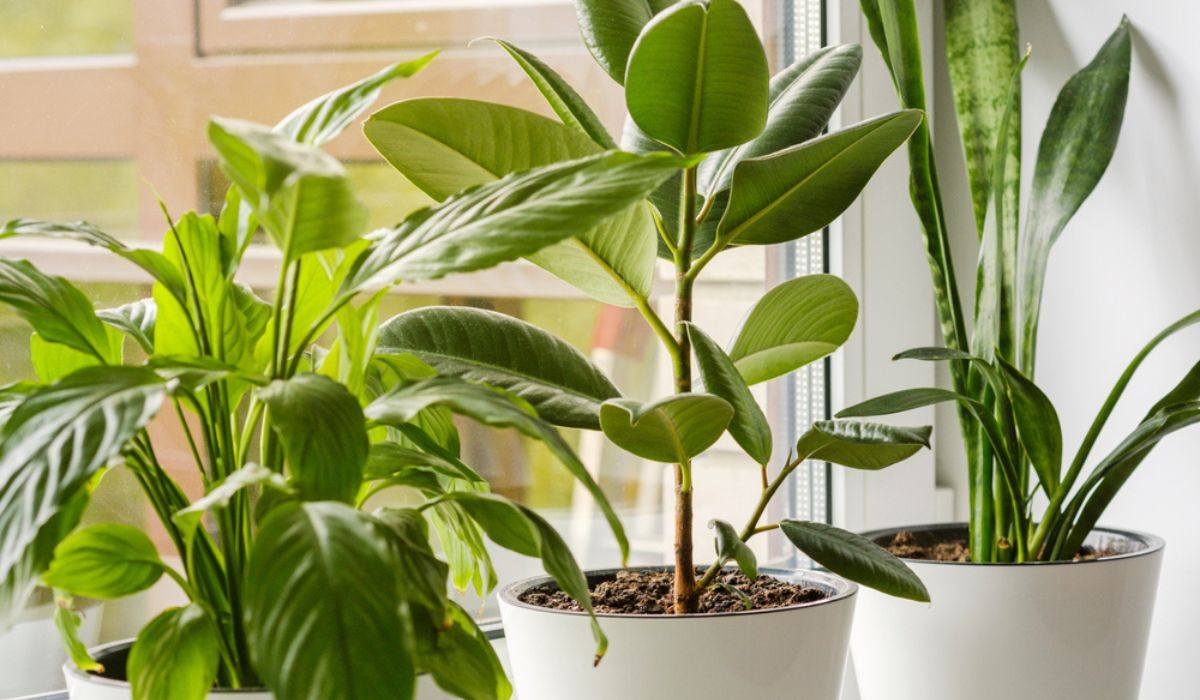The ancient practice of Feng Shui has gained widespread popularity in the pursuit of creating a harmonious and balanced living space. Integrating Feng Shui principles with the presence of air-purifying plants in homes provides a dual benefit: it improves indoor air quality while also aligning with the positive energy flow promoted by Feng Shui. This article delves into the world of Feng Shui air-purifying plants, examining 10 specific types and elucidating their benefits, the importance of incorporating them into home environments and providing crucial recommendations for an optimal fusion of greenery and energy balance.
Feng Shui is an ancient Chinese practice that focuses on achieving harmony and balance in one’s surroundings. It focuses on the flow of energy, or “chi,” and how it interacts with the environment. Indoor plants, especially those with air-purifying properties, fit in perfectly with these principles. The incorporation of such plants is thought to improve the flow of positive energy while also cleansing the air, resulting in a healthier and more vibrant living environment.
See also: Feng Shui principles to buy a house
10 Feng Shui air purifying plants and their advantages
Spathiphyllum (peace lily)
The peace lily, known for its elegant white blooms, is effective in removing airborne toxins such as formaldehyde and benzene. It also thrives in low-light environments, making it suitable for a variety of settings.
Sansevieria Trifasciata (snake plant)
The snake plant, also known as Mother-in-law’s Tongue, is a powerful air purifier that converts carbon dioxide into oxygen at night. Its vertical, sword-like leaves represent endurance and strength.
Chlorophytum Comosum (spider plant)
This adaptable plant is very effective at removing common pollutants such as formaldehyde and xylene. It gives birth to “pups” or baby plants, which represent growth and vitality.
Aloe vera plant
Aside from its well-known skin-soothing properties, aloe vera aids in the removal of formaldehyde and benzene from the air. Its spiky leaves represent protection and good energy.
Chamaedorea Seifrizii (bamboo palm)
The bamboo palm thrives in indirect light and filters out airborne pollutants effectively. In Feng Shui, its feathery, bamboo-like leaves represent luck and prosperity.
Ficus Elastica (rubber plant)
The rubber plant excels at removing indoor air pollutants due to its broad, glossy leaves. In Feng Shui, it represents financial prosperity and good fortune.
Nephrolepis Exaltata (Boston fern)
The Boston fern, known for its lush greenery, is a powerful air purifier that adds moisture to the air. It represents the Wood element in Feng Shui, which represents growth and flexibility.
Epipremnum Aureum (money plant)
The money plant, as a symbol of prosperity and wealth, is capable of purifying the air by removing pollutants. Its trailing vines represent positive energy flow.
Chrysanthemum
Aside from its vibrant blooms, Chrysanthemum aids in the removal of toxins such as ammonia and benzene. In Feng Shui, it is associated with longevity and well-being.
Lavandula (lavender)
Lavender, known for its calming fragrance, not only improves air quality but also promotes relaxation and stress reduction. In Feng Shui, it represents the Fire element.
Importance of Feng Shui air purifying plants
The importance of incorporating Feng Shui air-purifying plants goes beyond aesthetics, delving into fundamental aspects of indoor well-being and positive energy dynamics. First and foremost, these plants play an important role in improving indoor air quality by acting as nature’s purifiers, effectively removing pollutants and toxins. This not only contributes to a healthier living environment, but it also aligns with the essence of Feng Shui, which emphasises the interaction of physical and metaphysical aspects of a space.
In the world of Feng Shui, the emphasis on positive energy flow, or “chi,” emphasises the importance of creating spaces where energy can freely circulate. Air-purifying plants act as catalysts for this harmonious energy flow, encouraging a sense of vitality and balance in the environment. Their presence is essential in creating an environment in which stagnant energy is transformed into a dynamic force, fostering a positive and uplifting atmosphere.
Feng Shui air-purifying plants, in addition to their practical benefits, contribute to the overall aesthetic appeal of interiors while embodying symbolic significance aligned with Feng Shui principles. Each plant has its own symbolism, representing natural elements and embodying specific energies. This visual harmony not only enhances the space’s physical beauty, but it also resonates with the deeper spiritual and symbolic dimensions of Feng Shui philosophy.
Furthermore, the importance of incorporating these plants stems from their ability to foster a deep connection with nature within indoor spaces. Bringing elements of the natural world indoors has become an essential aspect of creating a balanced and tranquil home environment in today’s fast-paced urban lifestyle. This connection with nature is in sync with Feng Shui principles, promoting a sense of grounding and harmony throughout the living space. In essence, incorporating Feng Shui air-purifying plants is a holistic approach to cultivating a living environment that prioritises health, positive energy and a deep connection with the natural world.
Key considerations
For optimal integration of Feng Shui air-purifying plants, key considerations that go beyond mere placement must be carefully considered. Each plant’s strategic positioning is critical, taking into account the specific energy or element associated with it. This entails positioning the plants in areas that correspond to their corresponding Feng Shui element, thereby improving the overall energy balance within the space. A money plant, for example, finds its harmonious placement in the wealth corner (southeast) of a room, contributing to the intention set for that specific space.
Regular maintenance practices are critical to the vitality and effectiveness of these plants. These tasks, which range from regular watering to timely pruning and leaf cleaning, all contribute to the health of the plants. Plants that are healthy and vibrant not only improve the aesthetic appeal of the space, but they also function more efficiently in terms of air purification and the promotion of positive energy flow.
Aim for a well-balanced mix of plant types representing the five Feng Shui elements: wood, fire, earth, metal and water. This variety promotes a harmonious and well-rounded energy balance within the space, in accordance with Feng Shui principles. Each element contributes its own unique qualities to an environment that resonates with balance and positive vibrations.
Another critical aspect of optimal integration is taking into account lighting conditions. Plants have different light requirements and choosing plants that thrive in the available lighting conditions ensures their long-term health. Whether the space provides bright, indirect light or leans toward low-light environments, adapting plant selection is critical for their longevity and overall effectiveness.
Individuals can achieve an optimal fusion of Feng Shui principles and the benefits of air-purifying plants by following these important suggestions. This thoughtful integration not only improves the space’s visual appeal, but it also creates an environment that actively contributes to improved air quality and positive energy dynamics.
The combination of Feng Shui principles and air-purifying plants results in a harmonious and holistic living environment. Plants strategically placed in alignment with specific Feng Shui elements promote a balanced energy flow and positive vibrations throughout the space. Watering, pruning and cleaning are all necessary maintenance practices to keep the plants healthy and vibrant, enhancing both their aesthetic appeal and functional efficiency. The pursuit of a balanced mix of plant types representing the five Feng Shui elements adds to the atmosphere of balance and positivity. Taking lighting conditions into account ensures that each plant thrives in its designated space, contributing to the long-term well-being of both the plants and the occupants. Ultimately, optimal integration of Feng Shui air-purifying plants transcends traditional décor, resulting in a living space that not only purifies the air but also resonates with positive energy, visual beauty and a profound connection to the natural world.
FAQs
The number of plants depends on the size of the room and personal preference. However, it's advisable to strike a balance and avoid overcrowding to allow for optimal energy flow.
While real plants are preferred for their living energy, high-quality artificial plants can be used in spaces with low light or where maintenance is challenging.
Yes, considering the Feng Shui element of a plant enhances its symbolic significance. Place plants with Wood characteristics in the east or southeast, while Fire element plants are suitable for the south.
Yes, many air-purifying plants, such as snake plant and peace lily, are suitable for bedrooms. They contribute to cleaner air and create a calming atmosphere conducive to rest.
While most air-purifying plants are relatively low-maintenance, regular care such as watering, proper lighting and occasional pruning is essential for their well-being and effectiveness.
While real plants are preferred for their living energy, high-quality artificial plants can be strategically incorporated, especially in areas with challenging lighting conditions or for individuals with limited time for plant care.
Feng Shui does not prescribe specific sizes for plants, but it encourages a balanced and proportional arrangement. Consider the size of the room and the intended energy in selecting plants to maintain harmony.
Yes, many Feng Shui plants can be placed near electronic devices. However, it's advisable to choose plants that thrive in indoor environments and are not overly sensitive to electromagnetic fields.
There is no strict rule, but changing the placement of plants occasionally can refresh the energy in the space. Pay attention to the growth patterns of the plants and adjust their positions accordingly. How many plants should I have in a room for effective Feng Shui?
Can artificial plants be used for Feng Shui?
Should I consider the Feng Shui element of a plant when placing it in a specific room?
Can I have air-purifying plants in the bedroom?
Do Feng Shui air-purifying plants require special care?
Can I mix artificial plants with real ones for a Feng Shui arrangement?
Are there specific Feng Shui guidelines for the size of plants in different rooms?
Can Feng Shui plants be placed near electronic devices and gadgets?
How often should I change the placement of Feng Shui plants?
| Got any questions or point of view on our article? We would love to hear from you. Write to our Editor-in-Chief Jhumur Ghosh at jhumur.ghosh1@housing.com |







